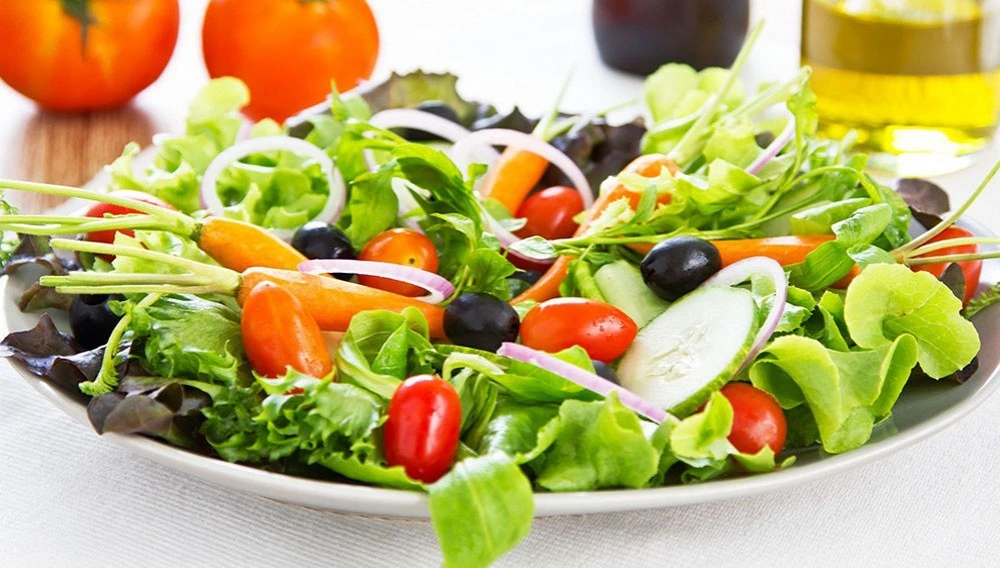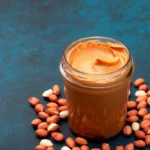
Welcome to our exploration of the delightful world of salads! Often seen as a simple side dish or a light meal, salads are far more than just a mix of greens. They offer a rich tapestry of flavors, textures, and nutritional benefits that can elevate any dining experience. From the crunchy freshness of seasonal vegetables to the vibrant dressings that bring everything together, salads are versatile creations that cater to a variety of tastes and dietary preferences. In this blog post, we’ll uncover some intriguing facts about salads that highlight their culinary diversity, health benefits, and even their environmental impact. Whether you’re a salad enthusiast or just looking to incorporate more greens into your diet, these fascinating tidbits are sure to inspire you to appreciate salads in a whole new light!
Ancient Origins
Salads have a rich history that dates back to ancient times, with the term “salad” deriving from the Latin word “sal,” which translates to salt. In ancient Rome, salads consisted of raw vegetables, often seasoned with salt, vinegar, and oil. This combination not only enhanced flavor but also preserved the freshness of the ingredients. The practice of eating raw vegetables as part of a meal is believed to have been a way to promote health and vitality, setting the foundation for the salads we enjoy today.
Roman Empire Favorite
During the Roman Empire, salads were a staple in the diet of many citizens. Romans would combine a variety of fresh, raw vegetables with a dressing made from vinegar, oil, and herbs, creating a dish that is remarkably similar to modern salads. This culinary practice reflected the Romans’ appreciation for fresh ingredients and their understanding of the health benefits associated with consuming vegetables. Salads were often served as a side dish or appetizer, showcasing the vibrant produce available in their gardens and markets.
Salad Days
The phrase “salad days” originates from William Shakespeare’s play “Antony and Cleopatra,” where it is used to refer to a time of youthful innocence and exuberance. The term has since evolved to symbolize a period of carefree enjoyment and vitality. This connection to youth and freshness mirrors the qualities of salads themselves, which are often associated with health, vitality, and a vibrant lifestyle. The phrase has become a cultural reference point, evoking nostalgia for simpler, more joyful times.
Vitamin Boost
Leafy greens, such as spinach and kale, are nutritional powerhouses packed with essential vitamins A, C, and K. Vitamin A is crucial for maintaining healthy vision and skin, while vitamin C plays a vital role in immune function and collagen production. Vitamin K is important for blood clotting and bone health. Incorporating these greens into salads not only enhances flavor but also provides a significant boost to overall health, making salads an excellent choice for those seeking a nutritious diet.
Fiber-Rich
Salads are an excellent source of dietary fiber, which is essential for digestive health. Fiber aids in digestion by promoting regular bowel movements and preventing constipation. Additionally, it helps to keep you feeling full longer, which can be beneficial for weight management. Many salad ingredients, such as leafy greens, beans, and vegetables, are high in fiber, making salads a satisfying and healthy option for meals or snacks.
Antioxidant-Rich
Many salad ingredients, particularly colorful vegetables like tomatoes and bell peppers, are rich in antioxidants. Antioxidants are compounds that help combat oxidative stress in the body by neutralizing free radicals, which can cause cellular damage and contribute to various diseases. The vibrant colors of these vegetables often indicate the presence of beneficial phytochemicals, such as lycopene in tomatoes and vitamin C in bell peppers. Including a variety of antioxidant-rich ingredients in salads can enhance their health benefits.
Caesar Salad
The Caesar salad, a beloved classic, was created by Italian-American restaurateur Caesar Cardini in Tijuana, Mexico, in the 1920s. This salad is known for its creamy dressing made from ingredients like anchovies, garlic, egg yolks, and Parmesan cheese, combined with crisp romaine lettuce and crunchy croutons. The Caesar salad has become a staple in many restaurants worldwide, celebrated for its rich flavors and satisfying textures. Its popularity has led to numerous variations, but the original recipe remains a favorite among salad enthusiasts.
Greek Salad
A traditional Greek salad, or “Horiatiki,” is a vibrant and refreshing dish that typically includes ripe tomatoes, crisp cucumbers, Kalamata olives, and feta cheese, all drizzled with high-quality olive oil. This salad is not only a celebration of fresh Mediterranean ingredients but also a reflection of the region’s culinary heritage. The combination of flavors and textures, along with the health benefits of the ingredients, makes Greek salad a popular choice for those seeking a light yet satisfying meal.
Cobb Salad
The Cobb salad is a hearty and colorful dish that was invented by Robert Cobb, the owner of the Brown Derby restaurant in Hollywood, during the 1930s. This salad features a mix of ingredients, including diced chicken, crispy bacon, hard-boiled eggs, avocado, and blue cheese, all arranged on a bed of greens. The combination of flavors and textures makes the Cobb salad a filling meal option. It has since become a classic American salad, often served with a variety of dressings to suit different tastes.
World’s Largest Salad
The record for the largest salad ever made was achieved in Romania in 2012, where a massive salad weighed over 44,000 pounds. This monumental creation was made using an impressive variety of ingredients, including lettuce, tomatoes, cucumbers, and other fresh vegetables. The event aimed to promote healthy eating and raise awareness about the benefits of consuming fresh produce. This extraordinary salad not only showcased the creativity and dedication of its creators but also highlighted the communal aspect of food, bringing together people to celebrate health and nutrition on a grand scale.
Salad Month
May is designated as National Salad Month in the United States, a time to encourage individuals to incorporate more greens and fresh vegetables into their diets. This initiative promotes awareness of the health benefits associated with salads and aims to inspire creativity in meal preparation. During this month, various events, promotions, and recipes are shared to highlight the versatility of salads, making it an ideal time for people to experiment with new ingredients and flavors while enjoying the nutritional advantages of salads.
Salad Dressing Origin
Ranch dressing, one of the most popular salad dressings in the United States, was invented in the 1950s by Steve Henson, a plumber who created the recipe while working in Alaska. Originally served at his ranch, the creamy dressing quickly gained popularity and became a staple in households and restaurants across the country. Made from buttermilk, mayonnaise, and a blend of herbs and spices, ranch dressing complements a wide variety of salads and has even transcended its original purpose to become a favored dip for vegetables and snacks.
Seinfeld’s Big Salad
In the iconic TV show “Seinfeld,” one memorable moment features Elaine Benes obsessing over a “big salad.” This humorous subplot highlights the cultural significance of salads in everyday life, showcasing how something as simple as a salad can evoke strong emotions and preferences. The “big salad” became a symbol of healthy eating and a running joke throughout the series, illustrating how food can play an essential role in social interactions and personal identity.
Salad Days Song
The punk band Minor Threat created a song titled “Salad Days,” which reflects on themes of youth and nostalgia. The phrase “salad days” in the song captures the essence of carefree, youthful experiences and the bittersweet nature of growing up. This cultural reference resonates with many, as it evokes memories of simpler times, paralleling the freshness and vibrancy associated with salads. The song has become an anthem for those reminiscing about their formative years, drawing connections between food, memory, and identity.
Salad in Art
Throughout history, salads have been depicted in various forms of art, symbolizing freshness, abundance, and the beauty of nature. Artists have often used salads as subjects to convey themes of nourishment and vitality, capturing the vibrant colors and textures of fresh ingredients. These representations celebrate the aesthetic appeal of salads and highlight their significance in culinary traditions. The portrayal of salads in art serves as a reminder of the connection between food, culture, and creativity.
Mason Jar Salads
Layering salads in mason jars has become a trendy and practical way to prepare and transport salads. This method involves stacking ingredients in a specific order, with dressing at the bottom to keep greens fresh until serving. Mason jar salads are not only visually appealing but also convenient for meal prep and on-the-go lunches. This trend encourages individuals to create balanced meals by incorporating a variety of colorful vegetables, proteins, and grains while minimizing waste through reusable containers.
Edible Bowls
Edible bowls, often made from bread or tortillas, have gained popularity as a fun and innovative way to serve salads. These bowls add an extra crunch and flavor dimension to the meal while eliminating the need for disposable dishware. Edible bowls can be filled with a variety of salad ingredients, allowing for creativity in presentation and taste. This approach not only enhances the dining experience but also promotes sustainability by reducing waste associated with traditional serving methods.
Microgreens
Microgreens are young, tender vegetable greens that are harvested just after the first true leaves appear. They are often added to salads for their intense flavors and vibrant colors. Microgreens, such as arugula, radish, and basil, are packed with nutrients and can elevate the nutritional profile of a salad. Their small size and bold flavors make them a popular choice among chefs and home cooks alike, adding a gourmet touch to salads and enhancing their visual appeal.
Local Ingredients
Using local ingredients in salads supports local farmers and helps reduce carbon footprints associated with food transportation. By sourcing produce from nearby farms, consumers can enjoy fresher, seasonal ingredients while contributing to their local economy. This practice not only promotes sustainability but also fosters a connection between people and their food sources. Salads made with local ingredients often taste better and reflect the unique flavors of the region, encouraging a deeper appreciation for the culinary diversity available in different areas.
Compostable Waste
Salad scraps, including vegetable peels, stems, and wilted greens, can be composted, making them an excellent addition to compost bins. Composting these organic materials not only enriches the soil with nutrients but also helps divert waste from landfills, where it would otherwise contribute to methane emissions as it decomposes anaerobically. By composting salad scraps, you can create a rich, natural fertilizer that benefits gardens and plants, promoting healthier growth and reducing the need for chemical fertilizers.
Plant-Based Eating
Choosing salads as meals promotes plant-based eating, which is widely recognized as a more sustainable dietary choice compared to meat-heavy diets. Plant-based foods typically require fewer resources, such as water and land, and produce lower greenhouse gas emissions. Salads can be diverse and nutrient-dense, incorporating a variety of vegetables, fruits, nuts, and grains. By opting for salads, individuals can enjoy a wide range of flavors and textures while contributing to a more sustainable food system.
Dressing First
Tossing greens with dressing first is a technique that ensures an even coating of the dressing across all the salad ingredients. This method is particularly effective for leafy greens, as it helps prevent them from becoming soggy and allows for better flavor distribution. By coating the greens first, you can enhance the overall taste of the salad, making each bite flavorful. This technique also allows for better incorporation of other ingredients, such as nuts, seeds, or proteins, ensuring that every element is well-seasoned.
Chill Your Bowl
Chilling the salad bowl before serving is a simple yet effective trick to keep salads crisp and refreshing. A cold bowl helps maintain the temperature of the ingredients, particularly in warmer weather, ensuring that the greens stay fresh and crunchy. This practice is especially beneficial for salads that include delicate ingredients, such as herbs or thinly sliced vegetables, as it helps preserve their texture and flavor. Simply placing the bowl in the refrigerator for a short period before assembling the salad can make a noticeable difference in the dining experience.
Mix Textures
Combining different textures in salads, such as crunchy nuts, creamy cheese, and crisp vegetables, can elevate the overall eating experience. Textural contrast adds interest and excitement to a dish, making it more enjoyable to eat. For example, adding toasted almonds or walnuts can provide a satisfying crunch, while creamy feta or avocado can add richness. Including a variety of textures not only enhances the flavor profile but also makes the salad visually appealing, encouraging people to explore and savor each component.
Japanese Sunomono
Sunomono is a traditional Japanese salad that features thinly sliced cucumbers dressed in a sweet and tangy vinegar dressing. This dish is often served as a refreshing side to complement heavier meals, balancing flavors and textures. The dressing typically includes rice vinegar, sugar, and soy sauce, creating a harmonious blend of sweet and savory. Sunomono can also incorporate other ingredients, such as seaweed or seafood, making it versatile and adaptable to various tastes. Its light and crisp nature makes it a popular choice for summer dining.
Thai Som Tum
Som Tum is a vibrant and spicy Thai salad made primarily with shredded green papaya, which provides a unique crunch and flavor. The salad is typically dressed with a tangy lime dressing, often enhanced with fish sauce, chili, and palm sugar, creating a delightful balance of sweet, sour, and spicy flavors. Som Tum is often garnished with peanuts and served with fresh vegetables, making it a colorful and nutritious dish. This salad is not only popular in Thailand but has also gained international acclaim for its bold flavors and refreshing qualities.
French Niçoise
The Niçoise salad hails from the French city of Nice and is a classic Mediterranean dish that showcases a variety of ingredients, including tuna, olives, hard-boiled eggs, and fresh vegetables. Traditionally dressed with a vinaigrette, this salad is known for its vibrant colors and robust flavors. The combination of protein from the tuna and eggs, along with the brininess of olives and the freshness of greens, creates a balanced and satisfying meal. Niçoise salad is often served as a main course, particularly in warmer months, making it a popular choice for picnics and outdoor dining.
FAQs about Salad:
1. What are the different types of salads?
- Green Salads: Typically made with leafy greens like lettuce, spinach, or kale. They can include a variety of vegetables, nuts, seeds, and dressings.
- Vegetable Salads: Focus on a variety of raw or cooked vegetables, such as tomatoes, cucumbers, and carrots, often without a base of greens.
- Fruit Salads: Composed mainly of fruits, these can be served as a side dish or dessert. They may include a dressing made from yogurt or honey.
- Protein Salads: Incorporate protein sources like chicken, tuna, beans, or cheese. These salads can be served as a main dish.
- Pasta Salads: Made with cooked pasta, often combined with vegetables, meats, and dressings, served cold or at room temperature.
- Grain Salads: Use grains like quinoa, farro, or barley as a base, mixed with vegetables and proteins for a hearty dish.
2. How do I make a basic salad dressing?
A simple vinaigrette can be made by combining:
- 3 parts oil (such as olive oil) to 1 part vinegar (like balsamic or apple cider vinegar).
- Add salt, pepper, and any herbs or spices to taste.
- Whisk together until emulsified. For creamier dressings, you can add ingredients like yogurt or mayonnaise.
3. How can I keep my salad fresh?
- Storage: Keep greens and other ingredients separate until ready to serve. Store in airtight containers in the refrigerator.
- Use Paper Towels: Place a paper towel in the container to absorb excess moisture, which can help prevent wilting.
- Dress Just Before Serving: To avoid sogginess, add dressing only when you’re ready to eat the salad.
4. What are some healthy salad toppings?
- Nuts and Seeds: Almonds, walnuts, sunflower seeds, and chia seeds add crunch and healthy fats.
- Fruits: Fresh fruits like berries, apples, or citrus segments can add sweetness and flavor.
- Cheese: Feta, goat cheese, or parmesan can enhance flavor and provide protein.
- Whole Grains: Quinoa, brown rice, or farro can make salads more filling.
- Legumes: Chickpeas or black beans are excellent for adding protein and fiber.
5. Are salads always healthy?
While salads can be a healthy choice, it depends on the ingredients and dressings used. Salads heavy in creamy dressings, fried toppings, or high-calorie ingredients can be less healthy. Aim for a balance of fresh vegetables, lean proteins, and healthy fats for a nutritious salad.
6. Can salads be meal-prepped?
Yes, salads can be prepped in advance. Consider these tips:
- Layering: Place sturdier ingredients like carrots or cucumbers at the bottom and greens at the top to prevent sogginess.
- Separate Dressings: Keep dressings in separate containers until ready to eat.
- Use Fresh Ingredients: Choose ingredients that will hold up well over a few days.
7. How do I choose the best greens for my salad?
- Freshness: Look for vibrant, crisp leaves without browning or wilting.
- Variety: Experiment with different greens like arugula, romaine, or baby spinach to find your preferred flavor and texture.
- Seasonality: Choose greens that are in season for the best flavor and nutritional value.
8. What are some popular salad recipes?
- Caesar Salad: Romaine lettuce, croutons, parmesan cheese, and Caesar dressing.
- Greek Salad: Tomatoes, cucumbers, red onion, olives, feta cheese, and olive oil.
- Caprese Salad: Fresh mozzarella, tomatoes, basil, and balsamic reduction.









